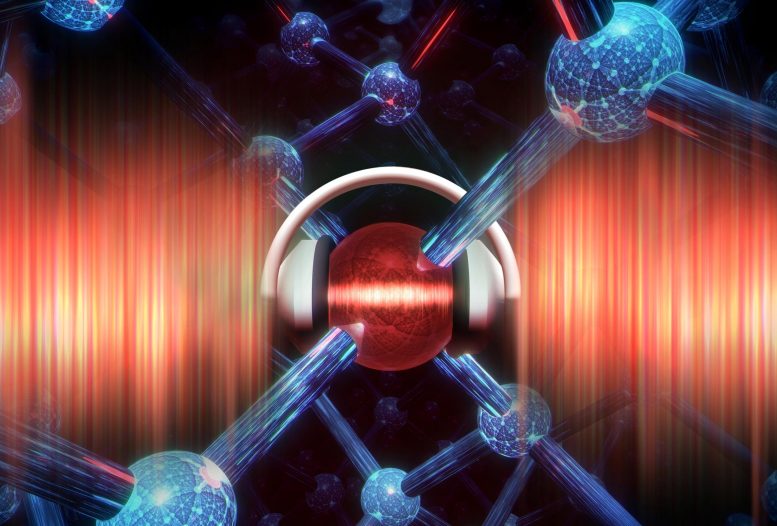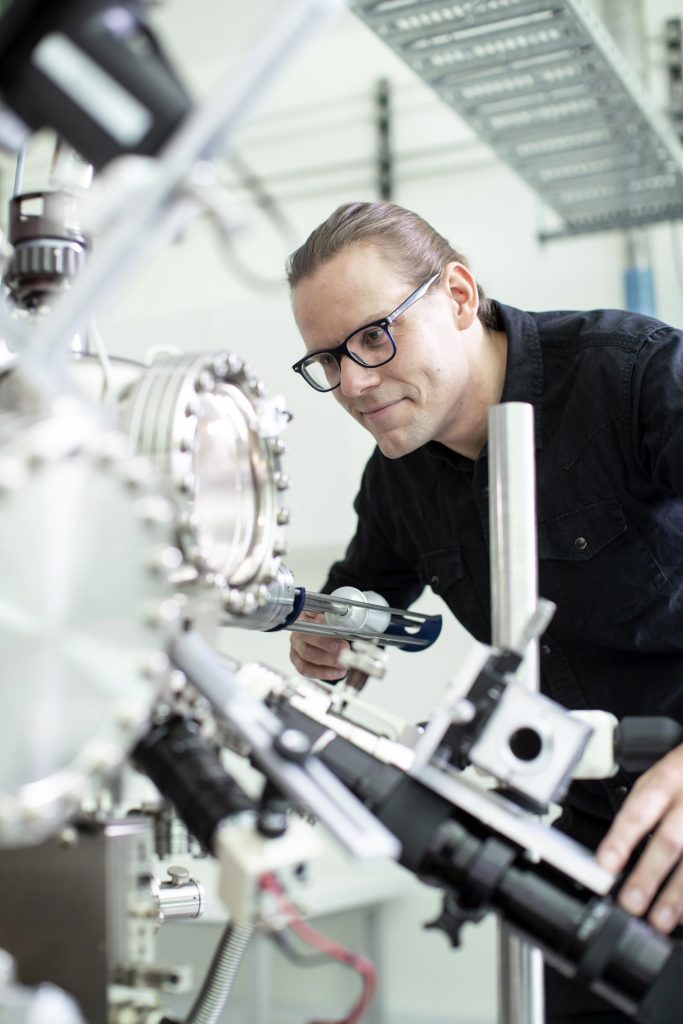
A team led by 2018 Australian of the Year Professor Michelle Simmons has taken another important step forward in the development of a silicon quantum computer.
Researchers at UNSW Sydney have demonstrated the lowest noise level on record for a semiconductor quantum bit, or qubit. The research was published in Advanced Materials.
For quantum computers to perform useful calculations, quantum information must be close to 100 percent accurate. Charge noise – caused by imperfections in the material environment that hosts qubits – interferes with quantum information encoded on qubits, impacting the accuracy of the information.
“The level of charge noise in semiconductor qubits has been a critical obstacle to achieving the accuracy levels we need for large-scale error-corrected quantum computers,” says lead author Ludwik Kranz, a PhD student at UNSW’s Centre for Quantum Computation and Communication Technology (CQC2T) working with the Centre’s spin off company Silicon Quantum Computing (SQC).
“Our research has demonstrated that we can reduce charge noise to a significantly low level, minimizing the impact it has on our qubits,” says Kranz.
“By optimizing the fabrication process of the silicon chip, we achieved a noise level 10 times lower than previously recorded. This is the lowest recorded charge noise of any semiconductor qubit.”

Creating quiet qubits
Qubits made from electrons hosted on atom qubits in silicon – the approach that Prof. Simmons has championed since 2000 – are a promising platform for large-scale quantum computers.
However, qubits hosted in any semiconductor platform such as silicon, are sensitive to charge noise.
The team’s research revealed that the presence of defects either within the silicon chip or at the interface to the surface were significant contributors to the charge noise.
“This was a surprise, as we have spent a lot of time optimizing the quality of our silicon chip but this showed that even a few impurities nearby can affect the noise,” says Kranz.
By reducing the impurities in the silicon chip and positioning the atoms away from the surface and interfaces where most of the noise originates, the team was able to produce the record-breaking result.
“Our results continue to show that silicon is a terrific material to host qubits. With our ability to engineer every aspect of the qubit environment, we are systematically proving that atom qubits in silicon are reproducible, fast, and stable,” says Prof Michelle Simmons, Director CQC2T.
Our next challenge is to move to isotopically pure crystalline Si-28 to capitalize on the long coherence times already demonstrated in this system.”
Timing is everything
Using the newly fabricated silicon chip, the team then performed a range of experiments to characterize the charge noise, with unanticipated results.
“We measured the charge noise using both a single electron transistor and an exchange-coupled qubit pair that collectively provide a consistent charge noise spectrum across a wide frequency range,” says CQC2T co-author Dr. Sam Gorman.
The measurements revealed a key factor that impacts charge noise – time.
“From the noise spectrum we measured, we know that the longer the computation – the more noise affects our system,” says Dr. Gorman.
“This has major implications for the design of future devices, with quantum operations needing to be completed in exceptionally short time frames so that the charge noise doesn’t become worse over time, adding errors to the computation.”
Working systematically towards a commercially available silicon quantum computer
To perform error-free calculations required for large-scale quantum computing, a two-qubit gate – the central building block of any quantum computer needs a fidelity – or accuracy – of over 99%. To reach this fidelity threshold quantum operations need to be stable and fast.
In a recent paper – published in Physical Review X – the Simmons group, using their atomic precision capability, demonstrated the ability to read out the qubits in 1 microsecond.
“This research combined with our lowest charge noise results shows that it is possible to achieve a 99.99% fidelity in atom qubits in silicon,” says Prof Simmons, who is also the founder of Silicon Quantum Computing (SQC).
“Our team is now working towards delivering all of these key results on a single device – fast, stable, high fidelity and with long coherence times – moving a major step closer to a full-scale quantum processor in silicon.”
Professor Simmons is working with SQC to build the first useful, commercial quantum computer in silicon. Co-located with CQC2T on the UNSW Sydney campus, SQC’s goal is to demonstrate the capability required to reliably produce a 10-qubit prototype quantum integrated processor by 2023.
“Our team’s results further confirm that our unique approach – of precisely positioning phosphorus atoms in silicon – is an extremely promising prospect for building the error-corrected, large-scale architecture required for the commercialization of silicon quantum computers,” Prof. Simmons says.
References:
“Exploiting a Single‐Crystal Environment to Minimize the Charge Noise on Qubits in Silicon” by Ludwik Kranz, Samuel Keith Gorman, Brandur Thorgrimsson, Yu He, Daniel Keith, Joris Gerhard Keizer and Michelle Yvonne Simmons, 23 August 2020, Advanced Materials.
DOI: 10.1002/adma.202003361
“Single-Shot Spin Readout in Semiconductors Near the Shot-Noise Sensitivity Limit” by D. Keith, M. G. House, M. B. Donnelly, T. F. Watson, B. Weber and M. Y. Simmons, 3 October 2019, Physical Review X.
DOI: 10.1103/PhysRevX.9.041003
Never miss a breakthrough: Join the SciTechDaily newsletter.
1 Comment
Very Interesting.
Wide avaialibility of Silicon. So obvious prefered choice for Quantum Computing.
Future Challenges.
Silicon Chips and Microprocessor for error free quantum computing – moving from 99.99% accuray to 100 % accuracy is the next challenge.
Reducing Charge Noise to Zero. Low noise may not be enough.
Improve Error Correction Methodologies to eliminate all errors in information processing.
Reducing Computing Time using algoritms for problem to be solved using Quantum Computing. Simplex? Shortcuts?
Explore other Elements like Germanium , and other elements in Column 14 of the Periodic Table for potential Chip fabrication?